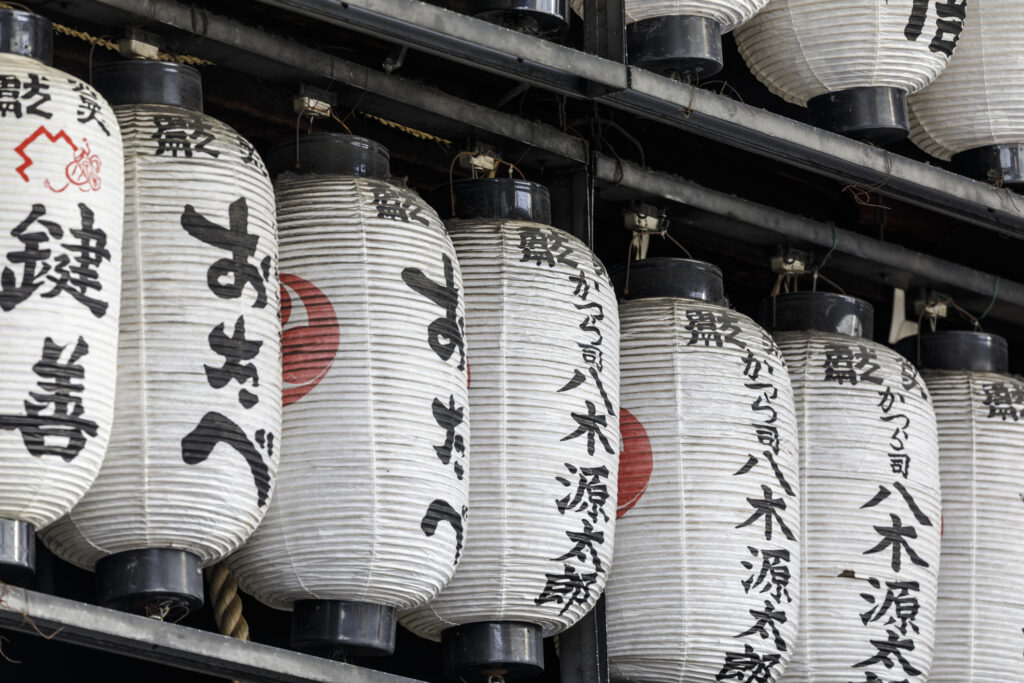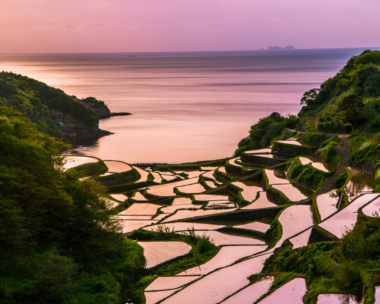Everything in Japan is unfamiliar: the enigmatic typeset dancing across signposts, billboards and menus; the lyrical dialect swirling about your ears; the bullet trains flying like kamikazes towards their final destination and arriving unscathed and on time. Despite its otherworldliness, this is a safe and easily-navigable destination to visit thanks to an abiding culture of efficiency, deference and omotenashi (hospitality) – even when you’re communicating in gestures rather than a common tongue.
Whether you’re a curious first-timer or a certified Japanophile, here are the best places to visit in Japan right now, and hot tips on when to go and the most unique things to eat and drink.
So tuck a cherry blossom behind your ear and lose yourself – afresh or anew – to the charms of this beguiling country.
What is the best time to travel to Japan?
Usually, spring is considered one of the best times to visit Japan – thanks to the Insta-famous cherry blossoms clouding the skylines. Autumn, which burnishes the countryside with turning leaves, is also a good time to visit Japan, and clement weather tends to coincide with these seasons, too.
But such beauty and comfort carry a hefty price; save your pennies and avoid the crowds by visiting from early January to mid-March and between September and October (consult Japan’s public holiday calendar as transport is busy then). You’ll be assailed by splendour in the innumerable gardens no matter Japan’s season.

Replenish your soul while meandering through the country’s “most celebrated landscape garden”, Kenroku-en in Kanazawa. Here, the country’s veneration of old age is embodied in the wooden poles upholding an ancient and much-loved Karasaki pine as it droops over Kasumigaike Pond.
The best Japan tourist attractions – from the ancient to the newest
Japan is home to some of the most moving spiritual places, from iconic pilgrimage routes to tranquil temples.
Retrace the 1,000-year-old footsteps of pilgrims as you weave a path between Shinto shrines on the Kumano Kodo, a network of trails braiding the Kii Peninsula.
Pass through the tunnel of red torii gates at Kyoto’s Fushimi Inari Shrine before paying your respects to the Kami (Shinto “gods”, who inhabit all things) and praying for good fortune.

Bathe in the tender glow of Kinkakuji, Kyoto’s gold-leafed Zen Buddhist temple. On still days, the gilded reflection of this UNESCO World Heritage Site is stamped with precision onto Kyoko-chi Pond.
Japan’s uniqueness lies in how seamlessly it straddles the ancient with the ultra-modern. Some of the latest new attractions in Japan include robot hotels and (more) futuristic trains.
The Shiki-Shima cruises like a space-age beluga across Tohoku, a mountainous region peppered with temples, castles and historic villages. Furnished with home-grown crafts, this sleeper train stops along its route for guided explorations. Keen? Seats are limited; you’ll need to submit an application and hope your name is drawn.
For the inhuman touch, check into one of 20 Henn Na hotels staffed by humanoid robots. If the idea leaves you cold, fear not: you’ll be warmed by futons with adjustable temperatures, and delighted by cupboards that refresh your clothing as you sleep.
Tokyo is of course the biggest city in Japan, and a must-visit. But once you’ve had your fill of the vibrant city, offset Tokyo’s legendary freneticism with a tropical getaway in the nearby “Tokyo Islands”. Izu Archipelago is lapped by turquoise bays, plugged with hot springs and laced with hiking trails. Visit in the warmer seasons for snorkelling, boating and camping adventures. Don’t forget to keep your eyes peeled for dolphins as you journey there by high speed ferry from Tokyo.
What to eat and drink in Japan
Japanese food tastes better when savoured in its birthplace, naturally. Even the sushi is more authentic here: try the ngiri draped with glazed ocean eel and sea bream, and remember to eat it as the locals do, with fingers instead of chopsticks. Eel, or unagi, is the “must-taste item” in Hamamatsu, where the brackish Lake Hamana seethes with these meaty creatures. They make a regular appearance in biscuit-like pies, which Japanese men are said to eat as a Viagra alternative; women, meanwhile, cherish unagi’s skin-enhancing properties.
In Kanazawa, where almost 100 per cent of Japan’s gold leaf is produced, ice-creameries encase soft-serves in the edible, tissue-thin filaments, cafes fleck tea with gold dust, and restaurants swaddle ochazuke rice balls in the precious metal. The secret behind the perfect udon noodle is resolved at a noodle-making class in Japan’s “udon kingdom”, Shikoku. The ingredients appear simple: medium-density wheat flour and saltwater; but the salt-to-water ratio must be judiciously calculated, and the bagged dough trampled underfoot before it is stretched, sliced, boiled, steeped in broth and eaten.

Matcha tea may be ubiquitous in Australia now, but it’s something else to partake of it in Japan in a traditional tea ceremony governed by an age-old custom initiated by a Buddhist monk in the 9th century – from how to hold the bamboo whisk, and when to ritualistically purify the utensils with silk cloth, to how many stitches of the tatami mat to leave between each delicate object. This harmony flows from the chashitsu (teahouse), across Shizuoka’s rolling tea plantations and all the way to cloud-veiled Mt Fuji.
The convention is to clap, turn the bowl clockwise, drain it in three gulps and slurp on the final sip in a customary sign of gratitude. This is not afternoon tea, but a meditation on the importance of awareness and the value of simplicity.



